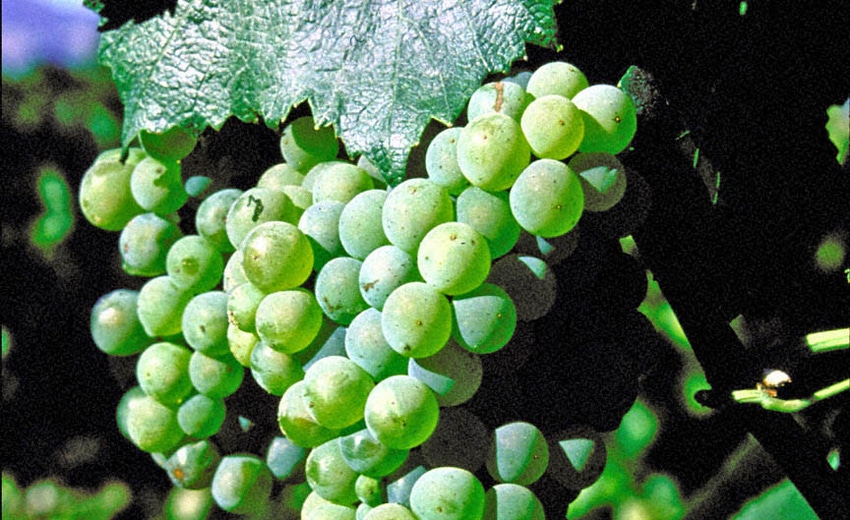
All signs point to the quality of this year’s Santa Cruz Mountains wine grape crop to be nothing short of exceptional, reports viticulturist Prudy Foxx.
Her company, Foxx Viticulture, based in Santa Cruz, Calif., works with growers throughout the appellation, which covers about 1,500 acres that straddle the mountains between Monterey Bay and the Santa Clara Valley
“As a consultant I’d like to claim my share of credit for that, but Mother Nature has been on our side this year,” Foxx says. “The weather has been even and perfect. Everything in the vineyards looks good.”
The season started off on well with consistently warm spring temperatures that fostered in a strong, uniform set across all the area’s varieties, mostly Cabernet Sauvignon, Chardonnay and Pinot Noir.
The vines have produced large, dense and uniformly-sized berries with an ideal skin to pulp ratio, she notes. All the factors for developing a full flavor profile are there. “What I really love this year is the cluster formation, “Foxx says. “They’re beautiful — perfectly formed and very true to type. If properly managed, this could be a fabulous vintage.”
The grapes began to soften in late July, about a week earlier than normal. Her growers are making their final sprays to control remaining powdery mildew and to protect the crop from botrytis.
Other field work includes removing dead leaves and clusters where berries with broken skins invite disease organisms. Growers also were putting up bird netting to protect grapes, particularly on one vertical shoot position trellising where the fruit is more exposed and prone to bird feeding.
“Birds tend to come into a vineyard from the edges,” Foxx explains. “With the small vineyards in our area, many of the vines are on or close to the edges and are more vulnerable to the birds.”
About the only bump in the road to harvest since bud break was rare rain in June. The half-inch that fell was the first significant rainfall in the Santa Cruz Mountains since the end of December.
“That wet weather didn’t seem to have much impact on the grapes as long as growers reacted properly by removing leaves directly around clusters on the shady side to improve air flow and dry out the canopy and applying powdery mildew treatments,” Foxx says. “In most cases, the crop is really clean. We’ve found tiny pockets of powdery mildew pressure, but those are extremely small, affecting less than 2 percent of the vines.”
This year’s crop offers the potential for yields to be at least as high as last year, she notes. Because fewer grapes tend to improve quality of the fruit, growers have been more diligent in thinning clusters this season to limit excessive production.
Foxx likes to thin clusters earlier than some to encourage more flavor in the grapes. “At about 80 percent veraison, we’ll cut off anything that’s still green,” she says. “But, we also go through the vineyards immediately after fruit set and remove any clusters that are jammed together or number too many for a single vine. That opens the canopy to encourage more flavor development in the remaining grapes. A great deal of flavor is developed in July.”
Exciting quality
The large crop set has allowed Foxx and her growers to be more selective in cluster thinning. “Even then, we may have the same number of clusters as last year,” she says. “But, the tonnage could be a little heavier because the clusters weigh more due to perfect berry formation and size. And that’s despite the unusually dry conditions this year. In fact, many of the orchards are dry-farmed and have received almost no water.”
She notes, growers on the summit, where vineyards range in elevation from about 2,000 to 3,000, could be ready to start harvesting by the end of August or early September. Others may begin a month later. Either way, this year’s harvest should be slightly early.
“I’m really excited about the potential quality of this year’s crop,” says Foxx, who favors picking grapes when sugar levels are between 23 and 25 Brix. “Most winemakers seem to be picking at a little earlier Brix now. This year the grapes will be more fully mature at harvest. So, we’ll have Brix and pH numbers that are well balanced. The combination of full flavor maturity and lower Brix will be awesome.
“To be at this stage of the season with the canopies looking as strong as they do and the fruit as well- formed as it is, feels really great. Now we need the good weather to stay with us. We want even temperatures with daytime highs in the 80s and nights cooling to the 50s and 60s. Those would be ideal and often that’s what we experience through the fall.”
If you would like to read more about California grape growing, subscribe to GrapeLine, the exclusive electronic newsletter sponsored twice a month by Chemtura: See here for sign-up. It’s free and e-mailed the second and fourth weeks of each month from March through October.
More from Western Farm Press
Brad Kelley, the farm boy with 1 million acres
Arizona dairyman shakes up cow ration with ‘feed beets’
Drones and pesticide spraying a promising partnership
Farmer guilty of defending family with shotgun
Wrenching legacy of illegal marijuana farms
Farmer risks life to stop fire
About the Author(s)
You May Also Like




